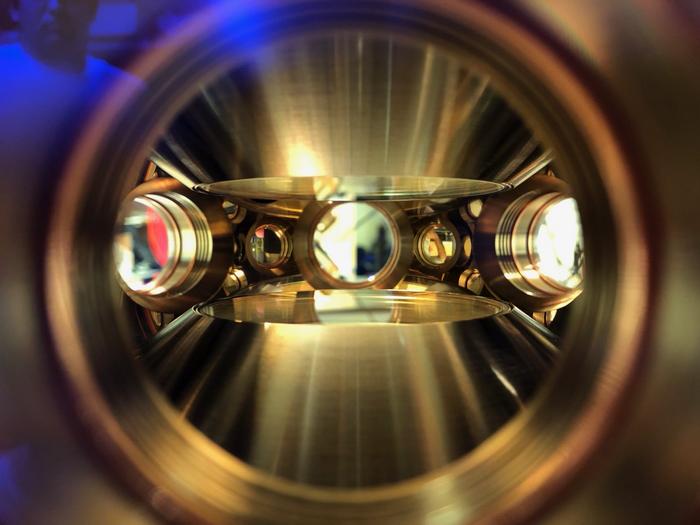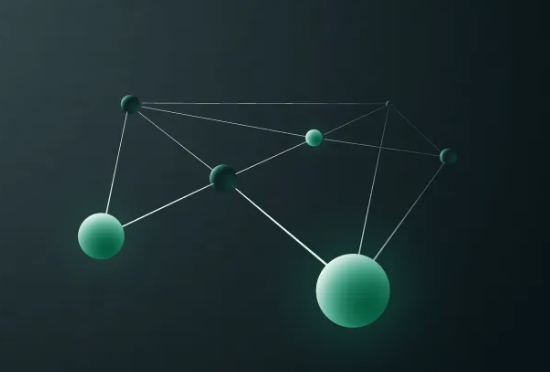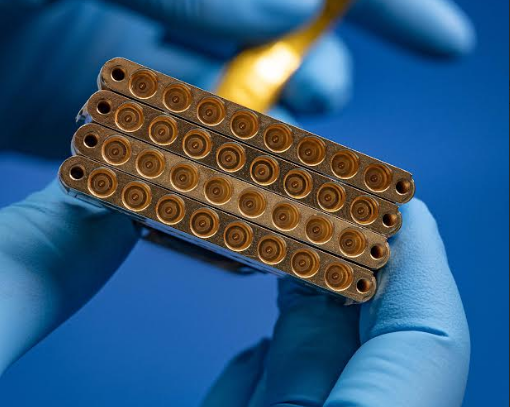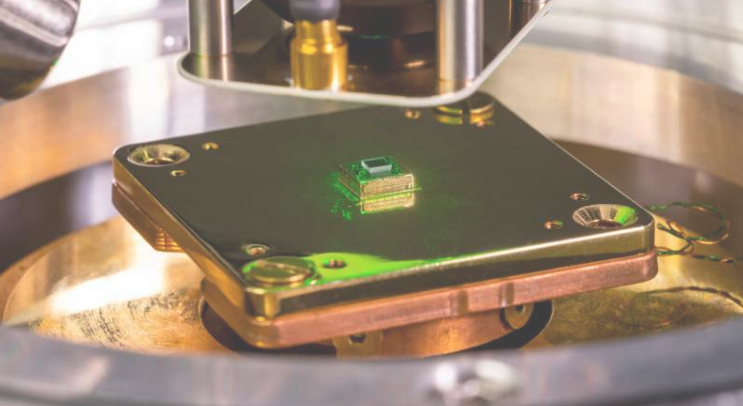Insider Brief
- Researchers at Technion used quantum tunneling between optical tweezers to transfer atoms from one location to another, publishing the results in in Science Advances.
- By adjusting the spacing in a linear array of three optical tweezers, the team controlled the tunneling rate, smoothly transferring atoms between the two outer tweezers with minimal probability of finding them in the center.
- This innovative technique, supported by the Israel Science Foundation and other organizations, could advance new quantum platforms.
- Image: A zoom-in through the same side window shows the windows both above and below. (Technion)
PRESS RELEASE — An experimental setup built at the Technion Faculty of Physics demonstrates the transfer of atoms from one place to another through quantum tunneling between optical tweezers. Led by Prof. Yoav Sagi and doctoral student Yanay Florshaim from the Solid State Institute, the research was published in Science Advances.
The experiment is based on optical tweezers — an experimental tool for capturing atoms, molecules, and even living cells using an optical potential created by laser beams focused to a micron-sized spot. How is this possible? The interaction of light with matter generates a force proportional to the intensity of the light. This force is too weak to affect our daily lives, but when it comes to tiny particles such as atoms, it can be strong enough to hold them in place or move them from one location to another. The invention of optical tweezers, which have become a significant tool in physics, earned physicist Arthur Ashkin the Nobel Prize in Physics in 2018.
The Technion researchers used a linear array of three optical tweezers in their experiment. By changing the distances between each pair of adjacent tweezers, they dynamically controlled the tunneling rate of atoms between them. Tunneling is a phenomenon unique to the quantum world, where particles have a chance to pass through a potential barrier they cannot classically overcome. By controlling the tunneling rate, the researchers were able to smoothly and efficiently transfer atoms between the two outer tweezers.

In addition, the researchers showed that although the atoms move between both sides of the chain, the likelihood of finding them in the middle tweezer is very low. This intriguing feature of the transfer scheme can be understood by recalling that in quantum theory, a particle is described by a wave packet. In the scheme demonstrated in the experiment, the waves interfere destructively in the middle trap, making it impossible to find the atoms there. This is the first demonstration of this transfer method, and the researchers believe it could represent a significant milestone in the development of new quantum platforms.
The research is supported by the Israel Science Foundation (ISF), the Pazy Foundation, and the Helen Diller Quantum Center at the Technion.


















